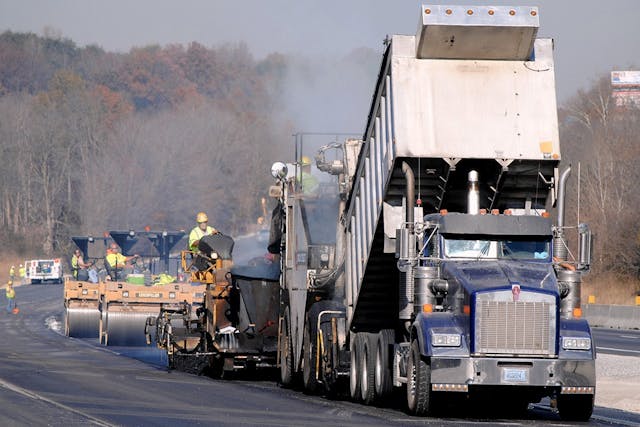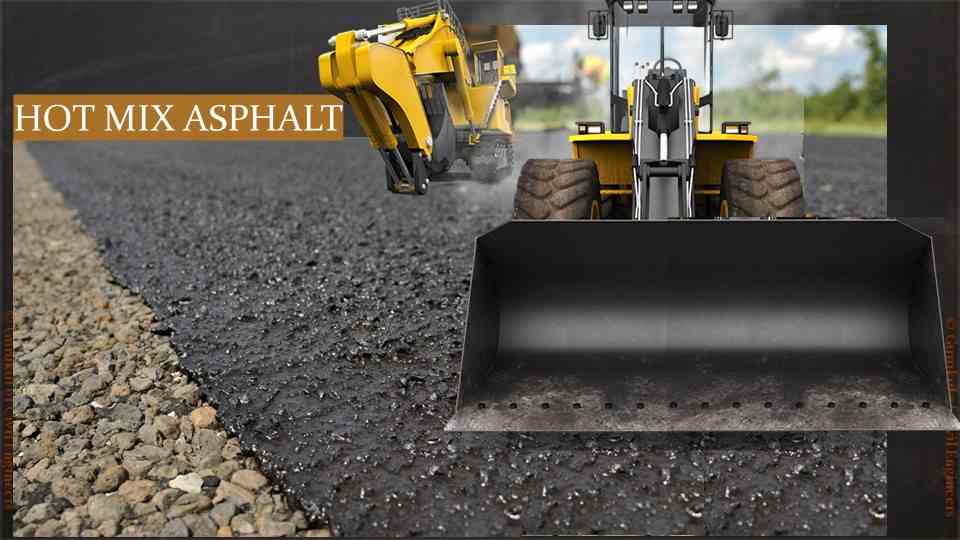Reimagine Your Area: Hot Mix Asphalt Paving for Angled Parking Lot Projects
Reimagine Your Area: Hot Mix Asphalt Paving for Angled Parking Lot Projects
Blog Article
Unlocking the Secrets of Hot Mix Asphalt Innovation
Checking out the depths of hot mix asphalt innovation discovers a globe where thorough procedures and specific solutions assemble to form our roadways and framework. The blend of binders, fillers, and aggregates isn't just a building and construction task but a tactical orchestration of sturdiness and effectiveness. As we peer into the elaborate dance of parts, a tapestry of strength and sustainability unravels. Yet what exists underneath this surface of asphaltic mastery, and what keys wait to be revealed in the realm of paving technologies?
Relevance of Hot Mix Asphalt
Warm Mix Asphalt plays a critical function in modern facilities growth due to its longevity and cost-effectiveness. As the most frequently used leading material for roads, freeways, and parking area, Hot Mix Asphalt provides a series of benefits that contribute to its value in construction tasks. One key advantage is its capability to hold up against heavy web traffic lots and severe weather, supplying a trustworthy and durable surface for transportation networks. Furthermore, Hot Mix Asphalt is cost-efficient in both first building and long-term maintenance, making it a favored option for several framework tasks.
The longevity of Warm Mix Asphalt stems from its composition, which consists of aggregates, binder, and filler products that are meticulously chosen and blended to fulfill certain performance needs. In general, the relevance of Warm Mix Asphalt in infrastructure advancement can not be understated, as it proceeds to be a cornerstone of modern-day building and construction techniques.
Components of Asphalt Mixes
The make-up of asphalt mixes is composed of carefully chosen aggregates, binder, and filler materials that are critical for achieving particular efficiency requirements. Aggregates are the primary element of asphalt blends, offering toughness and stability. These aggregates can be all-natural, such as gravel or smashed rock, or artificial, like recycled products from old pavements. The binder, typically asphalt or asphalt concrete, holds the accumulations with each other and supplies flexibility and resilience to the mix. The choice of the binder is crucial as it directly influences the mix's efficiency in various weather conditions. Fillers, such as moisturized lime or Rose city concrete, are used to enhance the mix's workability and aging resistance. Angled Parking.
The combination and proportion of these components play a considerable function in figuring out the high quality and efficiency of the asphalt mix. Engineers thoroughly develop the mix to satisfy particular needs, considering factors like traffic quantity, environment problems, and pavement life expectancy. Proper choice and harmonizing of accumulations, binder, and fillers are essential for creating sturdy, durable asphalt sidewalks.
Mixing and Manufacturing Strategies

When the aggregates are chosen, the binder, typically asphalt cement, is contributed to bind the materials together. The binder's high quality and quantity significantly impact the mix's click to read strength, resistance, and flexibility to environmental variables. In addition, fillers like moisturized lime or Portland cement might be included to boost certain attributes of the asphalt mix, such as its workability or wetness resistance.
During manufacturing, the accumulations and binder are heated up, generally in between 250-325 ° F(121-163 ° C ), to promote mixing and make sure appropriate finishing of the aggregates. The blending process has to be thorough to achieve a homogeneous blend that promotes the preferred performance qualities of the asphalt. Different techniques, such as set blending or drum blending, are used to accomplish constant and top quality asphalt mixes for building projects.
Aspects Impacting Asphalt Efficiency
Variables influencing asphalt performance include an array of variables that impact the longevity, longevity, and general high quality of asphalt sidewalks. One key aspect is the top quality of products used in the asphalt mix.

Style considerations, such as sidewalk density and drain, are essential in guaranteeing the long-lasting additional info efficiency of the asphalt pavement. By meticulously considering these variables, specialists and designers can maximize asphalt efficiency and improve the service life of pavements.
Sustainable Practices in Asphalt Technology

WMA allows for the production and positioning of asphalt mixes at reduced temperature levels compared to standard hot-mix asphalt, resulting in reduced power intake and greenhouse gas emissions. The usage of permeable asphalt mixes can assist minimize stormwater runoff problems by permitting water to infiltrate with the sidewalk and right into the ground, promoting all-natural water purification and recharge processes.
Verdict
To conclude, hot mix asphalt technology plays a vital duty in modern-day infrastructure advancement due to its longevity and cost-effectiveness. By thoroughly balancing components, employing proper mixing techniques, and considering more info here various factors, designers can develop high-quality asphalt blends that hold up against rush hour tons and rough climate condition. Accepting sustainable practices, such as making use of warm-mix innovations and recycled materials, even more enhances the ecological kindness of asphalt innovation.
Mixing and manufacturing methods in warm mix asphalt modern technology entail the specific combination and handling of accumulations, binder, and fillers to develop a sturdy and high-performance asphalt mix.Elements affecting asphalt efficiency encompass an array of variables that affect the toughness, longevity, and total high quality of asphalt pavements. Lasting practices in asphalt modern technology include numerous efforts aimed at reducing the ecological effect of asphalt manufacturing and paving processes. By including recovered asphalt sidewalk (RAP) and recycled asphalt roof shingles (RAS) into new asphalt blends, the market can significantly minimize the consumption of raw products and energy, while likewise reducing landfill waste.
WMA enables for the production and placement of asphalt blends at lower temperature levels contrasted to conventional hot-mix asphalt, resulting in lowered energy usage and greenhouse gas emissions.
Report this page